Ditapis dengan
E-book Revolutionary Bodies : Chinese Dance and the Socialist Legacy
Through their emphasis on innovation, Chinese dance practitioners interpret their research to create new forms. The removal of singing or speech in Shao’s sleeve dance choreography represents her obvious departure from xiqu, in which song and speech are usually considered essential to a complete performance. The rhythmical mapping of Shao’s classroom choreography onto e…
- Edisi
- -
- ISBN/ISSN
- 9780520300576
- Deskripsi Fisik
- 324 hlm
- Judul Seri
- -
- No. Panggil
- 792.851 WIL r
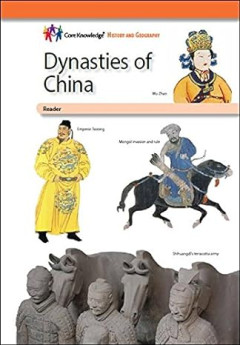
E-book Dynasties of China
DYNASTIES OF CHINA introduces the achievements of the dynasties that ruled China for nearly two thousand years. Chapters explore the Great Wall, the Silk Road, the Mongol invasions, Beijing and the Forbidden City, Chinese art and calligraphy, and much more. Paperback. 86 pages. ** Part of the CORE KNOWLEDGE HISTORY AND GEOGRAPHY (CKHG) series in world and American history and geography, integra…
- Edisi
- -
- ISBN/ISSN
- 9781683801443
- Deskripsi Fisik
- 90 halaman, ilus.
- Judul Seri
- -
- No. Panggil
- 931 COR d
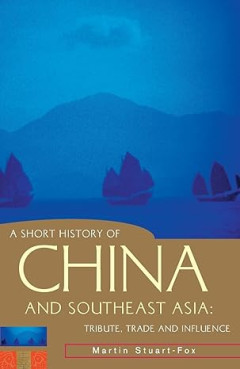
E-book A Short History of China and Southeast Asia: Tribute, Trade and Influence
This informative but concise history of China and Southeast Asia is perfect for travelers, students, teachers, and businesspeople. Portable and attractively designed, it includes color illustrations, maps, and a brief history of the region. Explored are relations between China and Southeast Asia across two millennia; patterns of diplomacy, commercial networks, and migration; and how these have …
- Edisi
- -
- ISBN/ISSN
- 9781864489545
- Deskripsi Fisik
- 289 halaman
- Judul Seri
- -
- No. Panggil
- 931 STU a
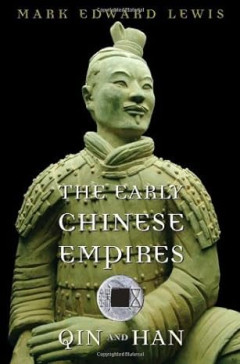
E-book The Early Chinese Empires: Qin and Han
In 221 B.C. the First Emperor of Qin unified what would become the heart of a Chinese empire whose major features would endure for two millennia. In the first of a six-volume series on the history of imperial China, Lewis highlights the key challenges facing the court officials and scholars who set about governing an empire of such scale and diversity.
- Edisi
- -
- ISBN/ISSN
- 9780674057340
- Deskripsi Fisik
- 334 halaman
- Judul Seri
- -
- No. Panggil
- 931 LEW t

E-book The Troubled Empire: China in the Yuan and Ming Dynasties
"The Mongol takeover in the 1270s changed the course of Chinese history. The Confucian empire—a millennium and a half in the making—was suddenly thrust under foreign occupation. What China had been before its reunification as the Yuan dynasty in 1279 was no longer what it would be in the future. Four centuries later, another wave of steppe invaders would replace the Ming dynasty with yet an…
- Edisi
- -
- ISBN/ISSN
- B00IZ99M4S
- Deskripsi Fisik
- 336 halaman
- Judul Seri
- -
- No. Panggil
- 951 BRO t
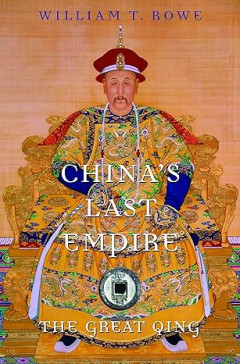
E-book China's Last Empire: The Great Qing
In a brisk revisionist history, William Rowe challenges the standard narrative of Qing China as a decadent, inward-looking state that failed to keep pace with the modern West. The Great Qing was the second major Chinese empire ruled by foreigners. Three strong Manchu emperors worked diligently to secure an alliance with the conquered Ming gentry, though many of their social edicts—especial…
- Edisi
- -
- ISBN/ISSN
- 9780674066243
- Deskripsi Fisik
- 369 halaman
- Judul Seri
- -
- No. Panggil
- 931 ROW c
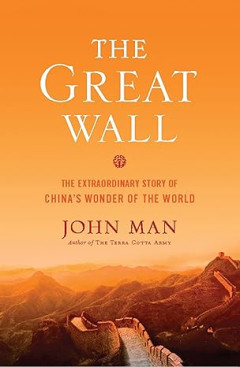
E-book The Great Wall: The Extraordinary Story of China's Wonder of the World
The Great Wall of China is a wonder of the world. Every year, hundreds of thousands of tourists take the five-mile journey from Beijing to climb its battlements. While myriad photographs have made this extraordinary landmark familiar to millions more, its story remains mysterious and steeped in myth. In this riveting account, John Man travels the entire length of the Great Wall and across two m…
- Edisi
- -
- ISBN/ISSN
- B001NRNIP8
- Deskripsi Fisik
- 349 halaman
- Judul Seri
- -
- No. Panggil
- 931 MAN t
E-book South China Sea Seeps
Cold seeps are seafloor manifestations of methane-rich fluid migration from the sedimentary subsurface to the seabed and into the water column, and ultimately, some of the methane may even reach the atmosphere (Boetius and Wenzhöfer 2013). Marine hydrocarbon seeps are common features of continental margins worldwide (Suess 2020). Because of their re…
- Edisi
- -
- ISBN/ISSN
- 9789819914944
- Deskripsi Fisik
- 262 hlm
- Judul Seri
- -
- No. Panggil
- 551.46164 CHE s
E-book A Young Englishman in Victorian Hong Kong : The Diaries of Chaloner Al…
hroughout his adult life, Alabaster kept diaries. In 1987, they were donated to the Library of the School of Oriental and African Studies at the University of London.2 For much of his career, the diaries list his daily appointments and meetings with only brief notices of personal events; for this he used Letts’s brand diaries, one day for each page. However, the first four volume…
- Edisi
- -
- ISBN/ISSN
- 9781760465926
- Deskripsi Fisik
- 234 hlm
- Judul Seri
- -
- No. Panggil
- 951.2 PEN a
E-book Modern China, 1840–1972 : An Introduction to Sources and Aids
Graduate students have traditionally learned a good part ofwhat they know about sources and research aids on modern Chinathrough hearsay and serendipity, in unsystematic and unreliable bitsand pieces. The field has now developed to the point where thisneed not and ought not to be so. It is now possible for beginningresearcher…
- Edisi
- -
- ISBN/ISSN
- 9780472901869
- Deskripsi Fisik
- 111 hlm
- Judul Seri
- -
- No. Panggil
- 951 NAT m
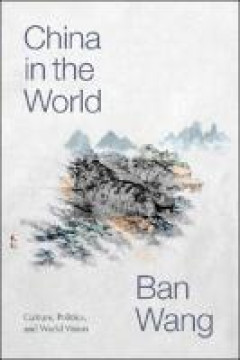
E-book China in the World: Culture, Politics, and World Vision
Ban Wang traces the shifting concept of the Chinese state from the late nineteenth century to the present, showing how the Confucian notion of tianxia—“all under heaven”—influences China’s dedication to contributing to and exchanging with a common world.
- Edisi
- -
- ISBN/ISSN
- 9781478092452
- Deskripsi Fisik
- 228 halaman
- Judul Seri
- -
- No. Panggil
- 951 WAN c
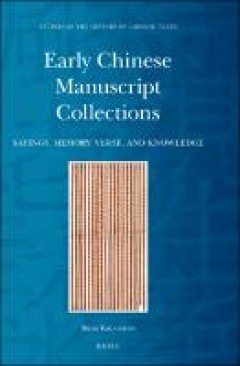
E-Book Early Chinese Manuscript Collections: Sayings, Memory, Verse, and Know…
As the first study of manuscript collections, this book asks what changes when sayings, stories, songs, and spells are brought together on the same carrier. Covering a plethora of manuscripts from the Warring States and early empires, and spanning sources from philosophy, historiography, poetry, and technical literature, this study describes the whole life-cycle of multiple texts collected on a…
- Edisi
- -
- ISBN/ISSN
- 9789004540842
- Deskripsi Fisik
- 232 halaman
- Judul Seri
- -
- No. Panggil
- 091 KRI e
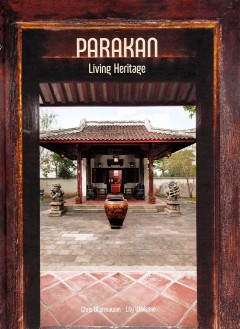
Parakan Living Heritage
Di Pecinan Parakan, kita menjumpai warisan budaya yang diam tanpa kehebohan promosi. Warisan budaya itu hidup natural, menjadi bagian dari kehidupan sehari-hari. Menjadi living heritage. Banyak keluarga Peranakan Tionghoa yang masih menjalankan tradisi sembahyang di altar leluhur keluarga. Kalaupun sudah tidak lagi, altar sembahyang leluhur tetap mereka rawat. Banyak makam tua masih utuh, bah…
- Edisi
- Cet. 1
- ISBN/ISSN
- 9786239605605
- Deskripsi Fisik
- xii, 196 hlm; 22 x 29 cm
- Judul Seri
- -
- No. Panggil
- 909.04 CHR p
E-book Atlas of Religion in China : Social and Geographical Contexts
This atlas provides a bird’s-eye view of the religious land-scape in China. It maps the officially registered venues of five major religions—Buddhism, Christianity (Protestant and Catholic), Daoism, and Islam—at the national, pro-vincial, and county levels, and draws the contours of Confucianism, folk religion, and the Mao cult. It describes the main organizations, beli…
- Edisi
- -
- ISBN/ISSN
- 9789004369900
- Deskripsi Fisik
- 260 hlm
- Judul Seri
- -
- No. Panggil
- 200.51 YAN a
E-book Nineteenth-Century China : Five Imperialist Perspectives
The importance of opening a Second Port in China, as connectedwith the Company1 s interests, has escaped the attention of few Personswho have given the least consideration to our connections with that coun-try. Unfortunately, however, there exists so much diversity of opinionas to which Port would be the most favorable that we are involved …
- Edisi
- -
- ISBN/ISSN
- 9780472901364
- Deskripsi Fisik
- 99 hlm
- Judul Seri
- -
- No. Panggil
- 951 BAS n
E-book Dynasties of China
The clay army stood in silent formation, guarding the tomb of the first emperor of China. Alert and ready for battle, they were to protect the emperor from evil spirits and robbers. If a robber did manage to break in, he might not escape in one piece—the clay army surrounded the tomb. Over seven hundred thousand workers built the first emperor’s tomb and created his army of clay. And it too…
- Edisi
- -
- ISBN/ISSN
- -
- Deskripsi Fisik
- 90 hlm
- Judul Seri
- -
- No. Panggil
- 931 COR d
E-book China 2030 : Building A Modern, Harmonious, and Creative Society
China’s economic performance over the past 30 years has been remarkable. It is a unique development success story, providing valuable lessons for other countries seeking to emulate this success—lessons about the importance of adapting to local initiative and interregional competition; integrating with the world; adjusting to new technologies; building world-class infrastructure; and investi…
- Edisi
- -
- ISBN/ISSN
- -
- Deskripsi Fisik
- 473 hlm
- Judul Seri
- -
- No. Panggil
- 338.951 THE c
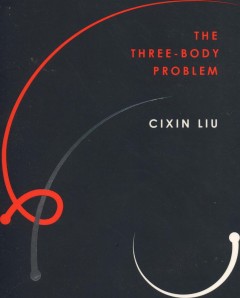
The three body problem
The Three-Body Problem is the first chance for English-speaking readers to experience the Hugo Award-winning phenomenon from China's most beloved science fiction author, Liu Cixin. Set against the backdrop of China's Cultural Revolution, a secret military project sends signals into space to establish contact with aliens. An alien civilization on the brink of destruction captures the signal and…
- Edisi
- -
- ISBN/ISSN
- 9781788543002
- Deskripsi Fisik
- vii + 434 hlm. 20x13 cm
- Judul Seri
- -
- No. Panggil
- 895.1 LIU t

A Brief History of China Dinasty, Revolution, and Transformation: From The Mi…
Explores "the development of a rich and complex civilization where the use of paper, writing, money, and gunpowder were widespread in ancient times and where silk, ceramics, tea, metal implements, and other products were produced and exported around the globe. [The book] examines the special conditions that allowed a single culture to unify an entire continent spanning 10 billion square kilomet…
- Edisi
- Cet.1
- ISBN/ISSN
- 97808040850056
- Deskripsi Fisik
- 320 hlm.; illus. 13x20cm
- Judul Seri
- -
- No. Panggil
- 951 CLE a

KURSUS KILAT BAHASA IONGHOA MODERN I
- Edisi
- -
- ISBN/ISSN
- -
- Deskripsi Fisik
- 143 hlm;15 x 20 cm
- Judul Seri
- -
- No. Panggil
- 495 HID k
- Edisi
- -
- ISBN/ISSN
- -
- Deskripsi Fisik
- 143 hlm;15 x 20 cm
- Judul Seri
- -
- No. Panggil
- 495 HID k
 Karya Umum
Karya Umum  Filsafat
Filsafat  Agama
Agama  Ilmu-ilmu Sosial
Ilmu-ilmu Sosial  Bahasa
Bahasa  Ilmu-ilmu Murni
Ilmu-ilmu Murni  Ilmu-ilmu Terapan
Ilmu-ilmu Terapan  Kesenian, Hiburan, dan Olahraga
Kesenian, Hiburan, dan Olahraga  Kesusastraan
Kesusastraan  Geografi dan Sejarah
Geografi dan Sejarah